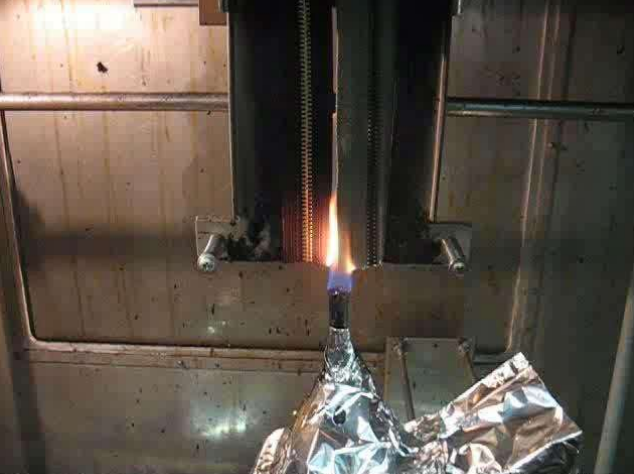According to the Occupational Health & Safety Association (OSHA), every year in the U.S., workers are killed or permanently injured by arch flashes, fiery explosions that can result from short circuits in high power electrical devices. Not only can these explosions be deadly, but they can also result in serious financial losses including fines, lawsuits, and damage to equipment and an interruption of processes.
As a manufacturer of heat and fire resistant NFPA (National Fire Protection Association) compliant fasteners, we thought you might find the following articles to be useful in terms of tips on how to protect your employees and reduce the chances of having an arc flash incident.
The article, “The dangers of arc flash and how to protect against them,” found on Schneider Electrical Blog, says that the most common cause of arc flash is insulation failure. They can also be caused by loose connections, insufficient mechanical dimensioning, equipment malfunction, contamination or degradation of insulation and animals.
The article also says that one way to reduce the risks of injury from an arc flash is for workers to wear Personal Protective Equipment (PPE). However, PPE should be sized to the risk level of the switchgear (combination of electrical disconnect switches, fuses or circuit breakers used to control, protect and isolate electrical equipment.)
The dangers of arc flash and how to protect against them – Schneider Electric Blog
According to the Occupational Health & Safety Association (OSHA), 5 to 10 arc flash events occur per day in the U.S., with most of these resulting in injuries and some being deadly. Beyond being a severe hazard to personnel, arcing faults also result in significant economic losses due to electrical fire damage to equipment and interruption of processes.
The article, “How to Reduce the Risks of Arc Flash Incidents in the Data Center,” agrees that in addition to knowing the right Personal Protective Equipment that workers must be using when working on electrical equipment where an arc flash is possible, you must also provide better, safer design and engineering of power distribution architects, as well as use Overcurrent Protection Devices (OCPDs) to stop fault currents and perform an arc flash hazard study in your facility.
How to Reduce the Risks of Arc Flash Incidents in the Data Center
Arc flashes are a dangerous on-the-job hazard in data centers. An arc flash occurs when electricity jumps, or arcs, between conductors. This can trigger an explosion that can kill or severely injure electricians and other workers, and cause major damage to a facility.
The article, “Reduce Arc Flash Incidents in 6 Ways,” also points out that companies must place warning labels on any piece of electrical equipment that poses an arc flash risk so that employees are aware of potential arc flash hazards. The article also says that companies must mark arch flash hazard zones on the floor so workers not wearing appropriate personal protective equipment (PPE) can clearly see how far away from electrical equipment they must stand in order to avoid a serious injury.
Reduce Arc Flash Incidents in 6 Ways – Grainger Industrial Supply
Reduce the frequency, severity and harmfulness of arc flash incidents with these safety tips. Arc flashes – the fiery explosions that can result from short circuits in high-power electrical devices – kill workers in the U.S. every year and permanently injure many more.
In addition, Kenneth Kutsmeda mentions in his article, “Preventing arc flash in mission critical facilities,” that the quote, “Failure is not an option,” by Eugene Kranz, a flight director for NASA during the Apollo 13 space mission, defines the concept of mission critical facilities. For those owning, managing, or running a mission critical facility, the operation of their electrical distribution system is essential to the survival of their business or organization. Whether that mission critical system is necessary for the protection of human life, such as an emergency-operation center, or essential for business continuity, such as a data center, they often share the same “failure is not an option” philosophy.
Preventing arc flash in mission critical facilities – Consulting – Specifying Engineer
Learning objectives: Evaluate the key codes and standards that define arc flash safety, including NFPA 70E: Standard for Electrical Safety in the Workplace, IEEE 1584, and NFPA: National Electric Code (NEC) 240.87. Explain arc flash calculations and studies, with best practices of mitigating arc flash incidents.
The idea that “failure is not an option” when it comes to the safety of employees working on live electrical equipment ties into YKK’s Fundamental Behavior #2 Be Vigilant About Safety. This Fundamental Behavior states that we should never take shortcuts that compromise our safety or the safety of our teammates, and all of our manufacturing facilities are fastidious when it comes to ensuring the safety of their employees.
As a brand leader for personal protective equipment solutions, YKK conducts arc flash tests on its products for this industry including YKK’s Flame Retardant (FR) zipper.


